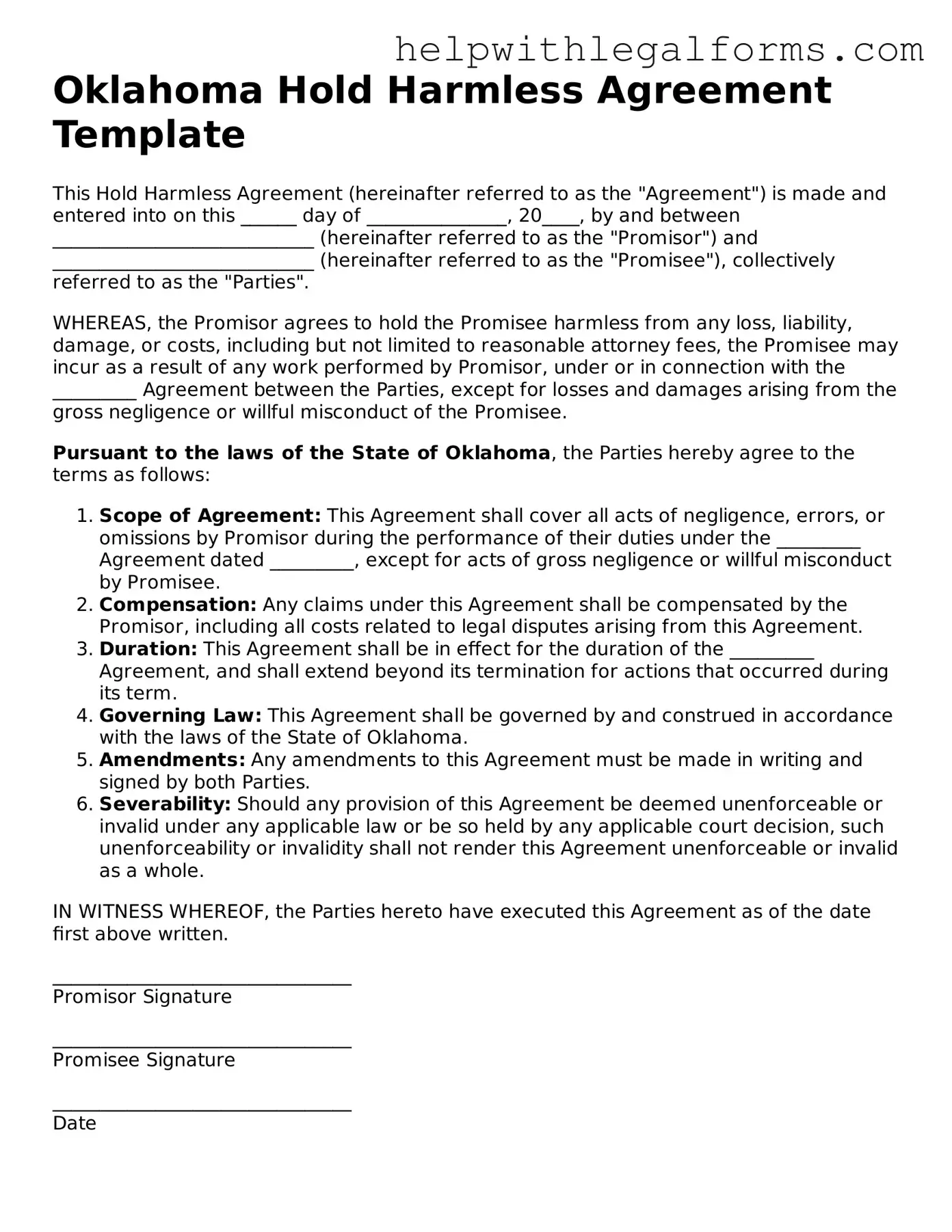What is a Hold Harmless Agreement form in Oklahoma?
In Oklahoma, a Hold Harmless Agreement form is a legal document used between two parties where one party agrees not to hold the other liable for risk, including possible legal claims or damages. It's often used in situations where there's a potential for risk or harm, effectively shifting the liability from one party to another.
When should one use a Hold Harmless Agreement in Oklahoma?
This type of agreement is used in various scenarios, including but not limited to, construction projects, events, or any activity that involves a certain degree of risk. It's particularly relevant when one party is using the property or services of another and wants to shield themselves from potential legal claims or liabilities that may arise from their actions.
Are Hold Harmless Agreements legally enforceable in Oklahoma?
Yes, Hold Harmless Agreements are generally enforceable in Oklahoma, provided they are well-drafted, clear in terms, and executed by both parties knowingly and willingly. However, the enforceability can be affected by the specific circumstances of the agreement and Oklahoma law, especially if the agreement is deemed to protect against liability for gross negligence or intentional misconduct.
How does one draft a Hold Harmless Agreement in Oklahoma?
To draft a Hold Harmless Agreement in Oklahoma, it's crucial to clearly identify the parties involved, describe the scope of activities covered, and explicitly outline the liabilities and risks each party is assuming. It's advisable to seek legal guidance to ensure the agreement complies with Oklahoma laws and fully addresses all potential liabilities and protections.
Can a Hold Harmless Agreement be modified or terminated?
Yes, a Hold Harmless Agreement can be modified or terminated, but such changes typically require the consent of both parties involved. The specific terms for modification or termination should be included in the agreement to facilitate any future changes.
What are the limitations of a Hold Harmless Agreement in Oklahoma?
While Hold Harmless Agreements can provide significant protection against liabilities, they have limitations. For example, they cannot shield a party from liabilities arising from their own negligence or intentional misconduct, especially in cases of gross negligence. Additionally, the agreement may not be enforceable if it's deemed unconscionable or violates public policy.
Do both parties need a lawyer to enter into a Hold Harmless Agreement in Oklahoma?
While it's not legally required for both parties to have a lawyer, consulting with legal professionals can help ensure that the agreement is fair, enforceable, and complies with Oklahoma laws. A lawyer can also provide valuable advice on the potential risks and liabilities specific to the situation.
What happens if one party breaches a Hold Harmless Agreement in Oklahoma?
If a party breaches a Hold Harmless Agreement in Oklahoma, the non-breaching party may have legal grounds to seek enforcement of the agreement or pursue damages. The specific legal remedies available will depend on the terms of the agreement and the nature of the breach.
Are there any specific clauses that should be included in an Oklahoma Hold Harmless Agreement?
Specific clauses that could be beneficial include the scope of the indemnification, the duration of the agreement, provisions for legal fees, a clause specifying the governing law (Oklahoma law), and any specific exceptions to the indemnification. Tailoring the agreement to the particularities of the situation and including comprehensive clauses can provide clearer protections for both parties.
